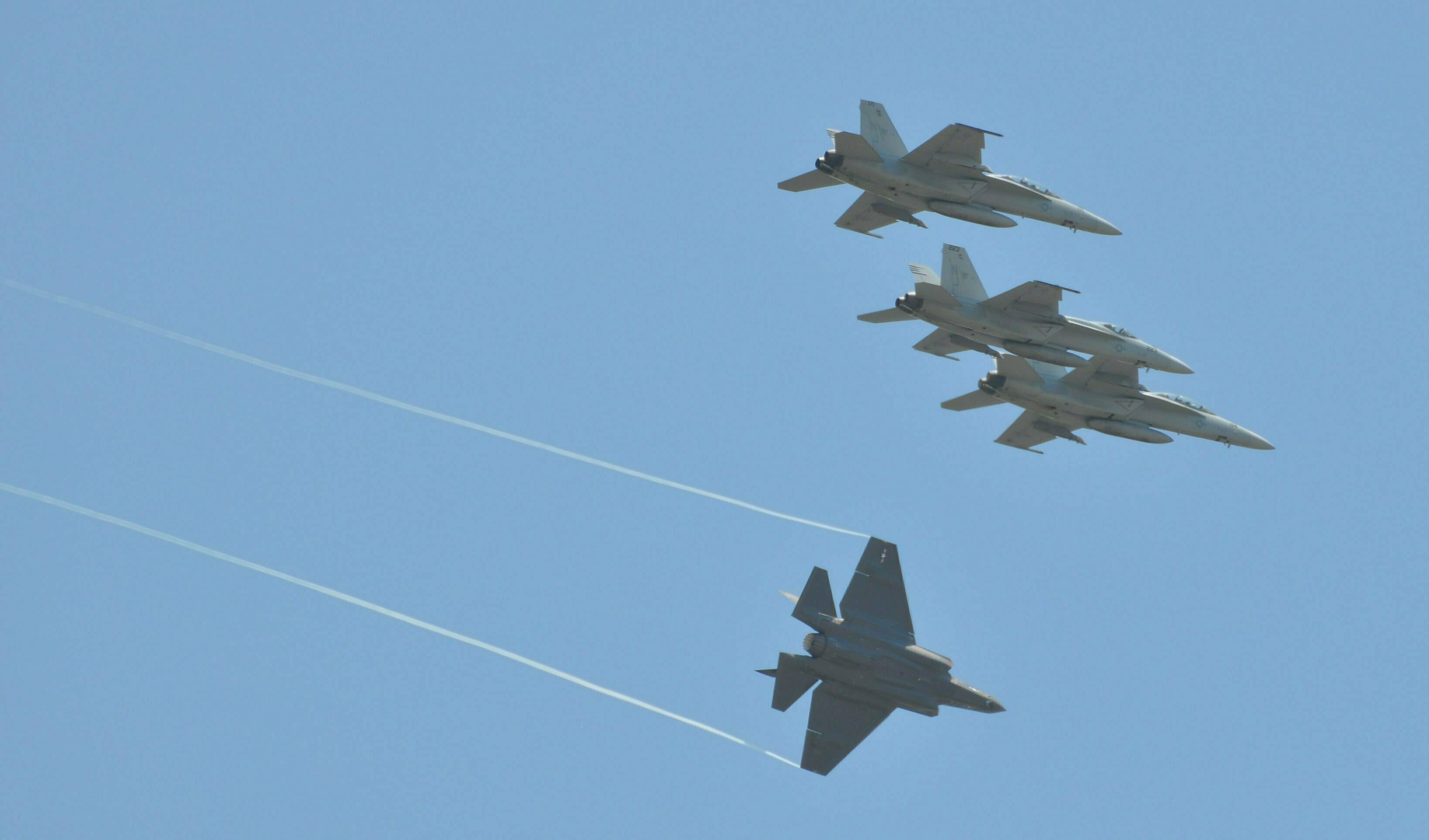[slidepress gallery=’the-f-35c-arrives-at-eglin-afb’]
2013-06-22 Today, the USN received its first F-35c for its training squadron at Eglin AFB.
According to a press release issued by the 33rd Fighter Wing:
The U.S. Navy’s Strike Fighter Squadron VFA-101 is preparing to receive the Navy’s first F-35C Lightning II carrier variant aircraft from Lockheed Martin today at estimated 12 p.m. Central here.
U.S. Navy pilots and maintainers from VFA-101 are now training at Eglin Air Force Base, Fla., in preparation for the first F-35C live flight training sorties.
Representatives of the media are invited to speak with the unit’s commanding officer an F-35C pilot and others about their training.
Recently, “Turbo” Tomassetti retired as the Deputy Wing Commander and has been replaced by a an experienced Navy carrier pilot.
Captain Paul Haas, Deputy Wing Commander, 33rd Fighter Wing, earned his commission from Aviation Officer Candidate School, Naval Air Station Pensacola Fla, in 1985.
He completed flight training in Corpus Christi and Kingsville, Texas, and was designated as a Naval Aviator in 1986.
He is a graduate of the Navy Fighter Weapons School with more than 4,400 hours, with seven squadron tours in fleet units (flying the F-14A/B/D and the F-18C/E/F) and adversary units (flying A 4E/F/M and F-16N).
He has more than 850 carrier landings on 11different aircraft carriers.
He has held command at the Squadron, Fleet Replacement Squadron, and Carrier Air Wing level, and served as Chief of Staff for Commander, Naval Air Forces Atlantic. He has flown during Operations DESERT SHIELD, SOUTHERN WATCH, ENDURING FREEDOM, and IRAQI FREEDOM, logging more than 250 combat flight hours.
The importance of the F-35C to the USN was underscored in our interview with Rear Admiral Moran, the head of Naval Air Warfare (OPNAV N98).
According to Admiral Moran:
We are buying all production aircraft currently.
We see the coming of the FORD and the coming of the F-35 as highly synergistic for the fleet and its operation as a sea base.
And with the F-35C must come Block 3F capability, which has a fully enabled set to operate the weapons we use at sea, multi-ship integration and a host of other very important capabilities important to how we expect to operate in the future.
For a video which shows the F-35C coming to Eglin and where the pilot discusses the plane and the future of the USN effort see the following:
http://www.weartv.com/news/features/top-stories/stories/first-navy-f35c-arrives-at-eglin-33126.shtml
Credit Photos: 33rd Fighter Wing, 6/22/13
- In the first two photos, Lt. Cdr. Chris Tabert, F-35C Lightning II instructor pilot, U.S. Navy Strike Fighter Squadron VFA-101 lands at Eglin Air Force Base’s 33d Fighter Wing after a two hour flight from Ft. Worth, Texas. F-35C accompanied by two F-18 hornets from Naval Air Station Lemoore CA fly over the Eglin flight line before landing.
- In the third photo, the F-18s flew with the F-35C from Ft. Worth, Texas to Eglin.
- In the fourth photo, the F-35C is seen performing maneuvers to lift its wings like it would on the deck of an aircraft carrier. These operations were performed during post-flight shut down and taken at the Navy’s F-35 Hangar area at Eglin AFB, Fla.
- In the fifth and sixth photos, Lt. Cdr. Chris Tabert, F-35C instructor pilot taxis the Lightning II joint strike fighter in after landing at Eglin Air Force Base, Fla and then prepares to exit the cockpit after landing at Eglin Air Force Base, Fla.
- In the seventh, eighth and ninth photos consecutively: the F-35C is seen performing passes over the Eglin flight line before landing and then the F-35C breaks away from formation prior to landing and finally there is a tight formation of F-35C and three F-18 hornets flying chase.


